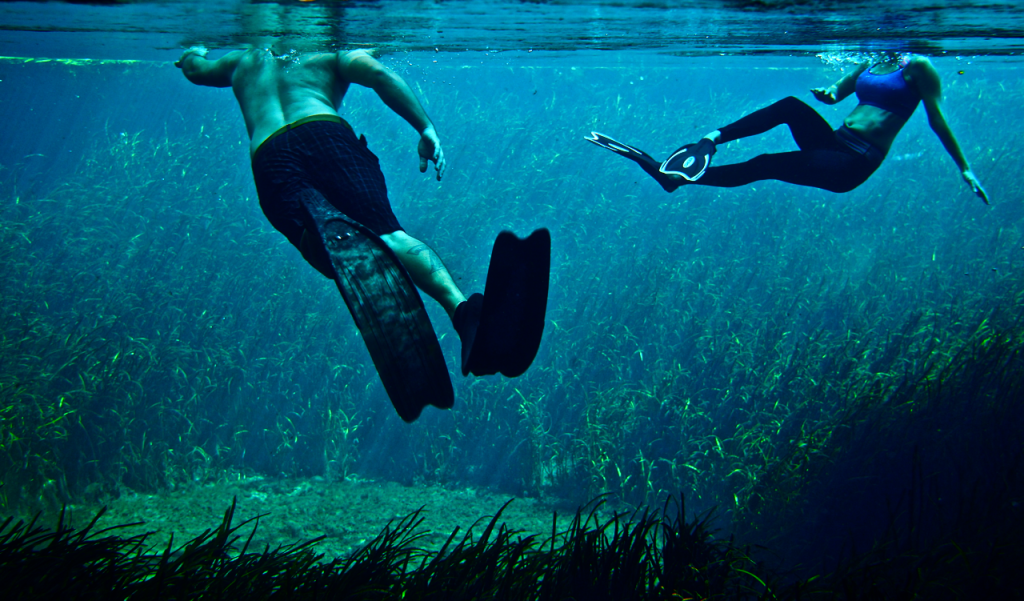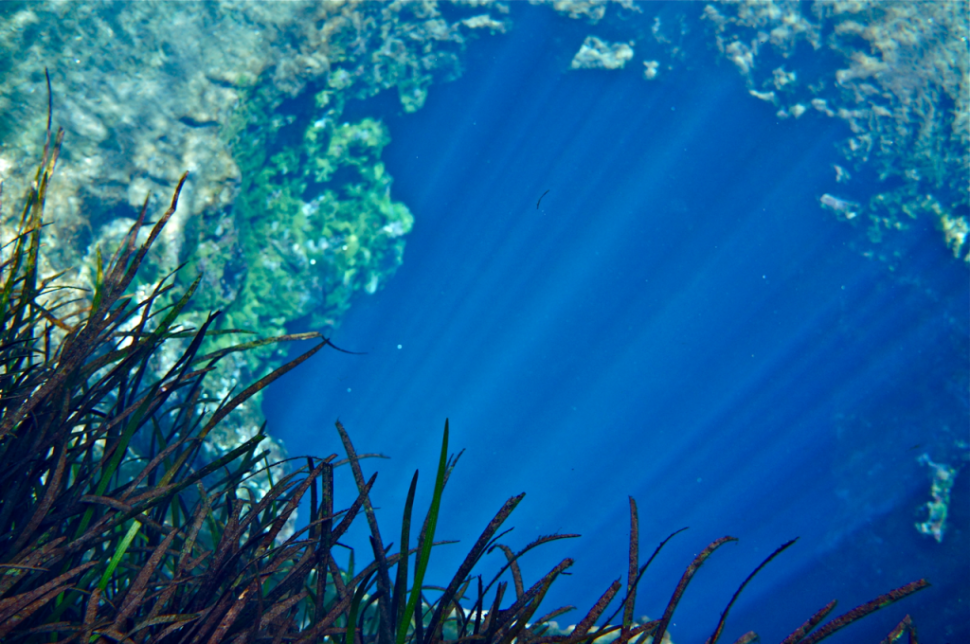But this is nothing compared to the 124 cf/s that Blue Hole boasts. I could feel that flow resisting my descent as I dove down. The push of water lessened, however, the deeper I dove. I shined my light on the sides of the cave, illuminating their walls and the spring vents that lead to a further labyrinth of caverns. Looking out to the shaft of light shining through the hole, I could see tiny bubbles sparkling in the sun as they rose. Soon I ascended myself, rising through the shaft of light shining through the hole so I could breathe once more.
See my dives for yourself in the videos below!
Ever since I visited it for the first time in 2010, Blue Hole – a feeder spring for the Ichetucknee River – has been one of my favorite springs in Florida. It’s set in the middle of serene wetland wilderness – no picnic tables or concrete siding here. The water is consistently among the clearest I’ve seen in Florida and is a perfect blue color. There’s plenty of fish and turtles swimming around the gently waving seagrass. But the diving opportunities are the real attraction. Uniquely, the spring vent is an enormous hole in the middle of the flat bottom of the spring pond. Descending through the hole, one enters a cave that widens as it gets deeper. From the sides of this cave, a blue shaft of light illuminates a circle on the white sandy bottom. This view was photographed for a 1999 National Geographic feature on Florida’s springs.
When I arrived, I immediately noticed that the water level was high, and the ripples of the spring’s flow were visible on the surface of the water – indicating a stronger flow than I remembered seeing here
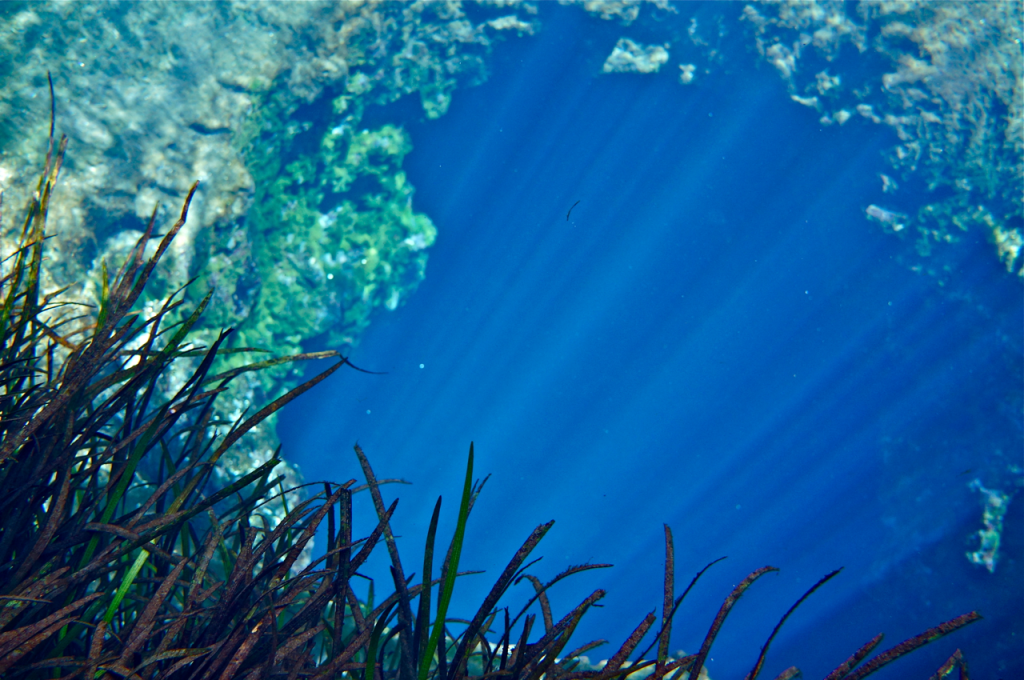

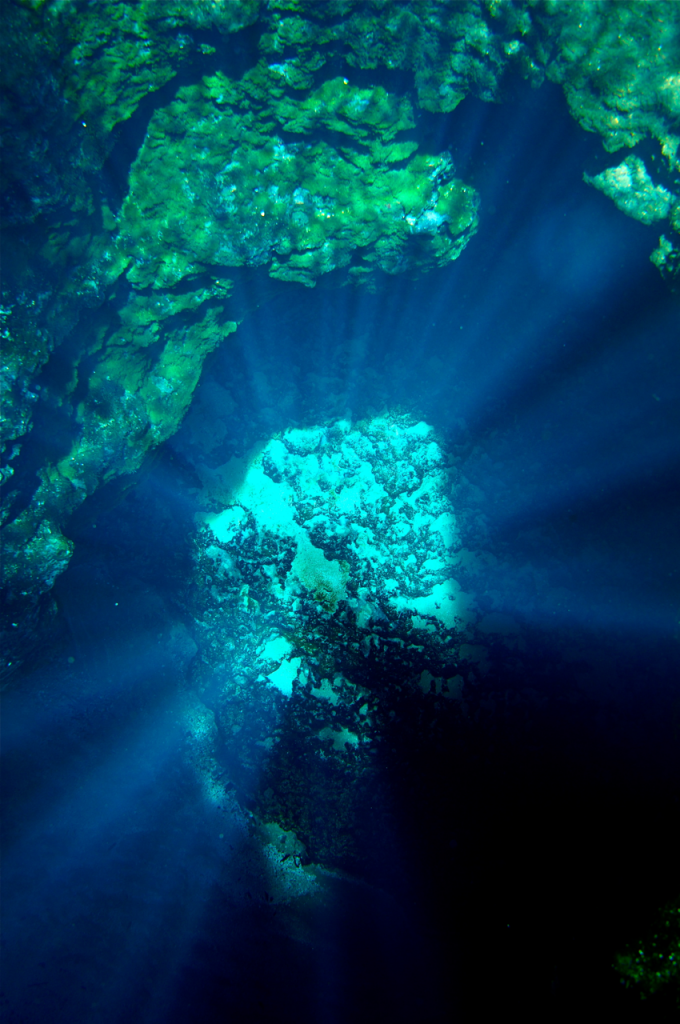
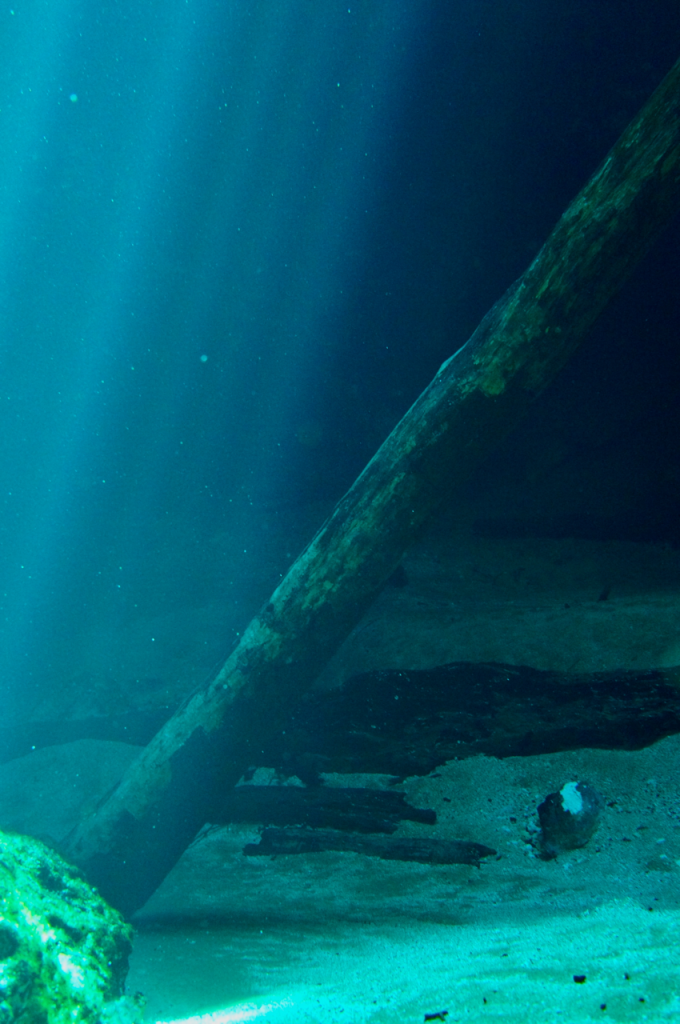
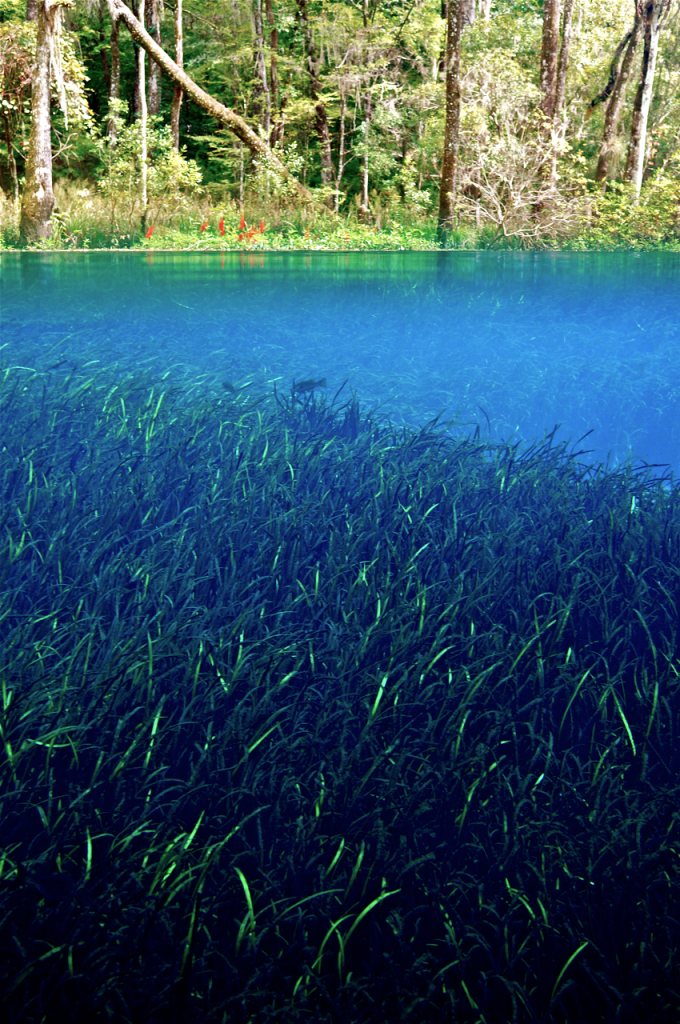
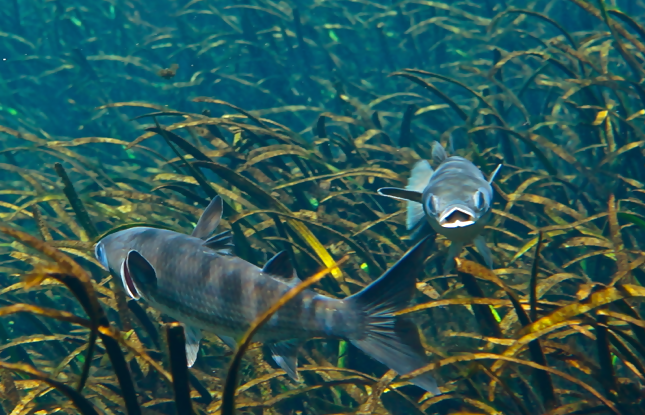
before. Fortunately, USGS provides statistics on spring flow for many of Florida’s springs, as well as other ecological health indicators. In fact, the flow that day was in fact somewhat higher than average. Dissolved oxygen, an essential element for spring wildlife, looks steady; unfortunately, however, nitrate levels are steadily rising from the beginning of this summer. If this continues, it could cloud the now-perfect water and encourage algae growth, which will then reduce oxygen levels and threaten the fish and turtles that currently live in the spring.
One way to fight this deterioration, if you are a Florida voter, is by voting for Amendment 1, the Florida Water and Land Conservation Initiative! If you feel inspired by the beauty of the springs as I do, this is a great way to have a direct impact in keeping them healthy. In fact, until October 7th, every dollar donated will be matched with $2.50 by “a group of generous supporters”. It won’t take much to make a significant difference.
Anyway, back to my explorations of Blue Hole. I noticed, flowing into the spring, a crystal-clear little creek just wide and deep enough to snorkel into. I swam up this creek, framed by swampy vegetation and inhabited by lazy fish, for about 50 yards or so. Normally any rivulet this small in Florida would be muddy and stagnant, but this was in fact a spring run, originating from Cedar Head spring, a third magnitude spring flowing at five cf/s (cubic feet per second), as per USGS.
Anyway, back to my explorations of Blue Hole. I noticed, flowing into the spring, a crystal-clear little creek just wide and deep enough to snorkel into. I swam up this creek, framed by swampy vegetation and inhabited by lazy fish, for about 50 yards or so. Normally any rivulet this small in Florida would be muddy and stagnant, but this was in fact a spring run, originating from Cedar Head spring, a third magnitude spring flowing at five cf/s (cubic feet per second), as per USGS.
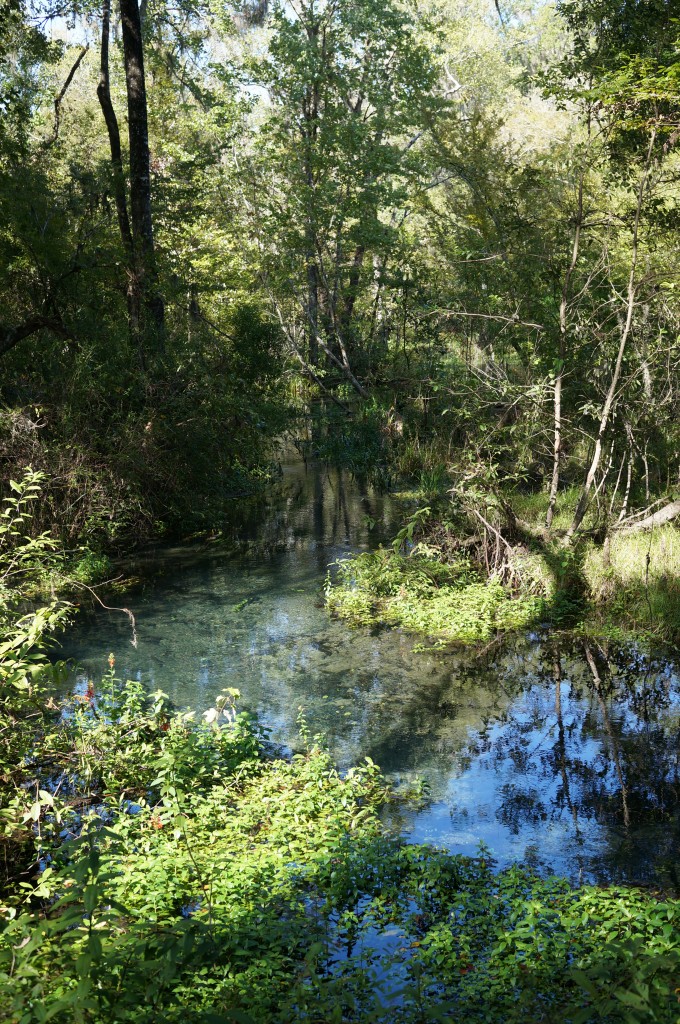
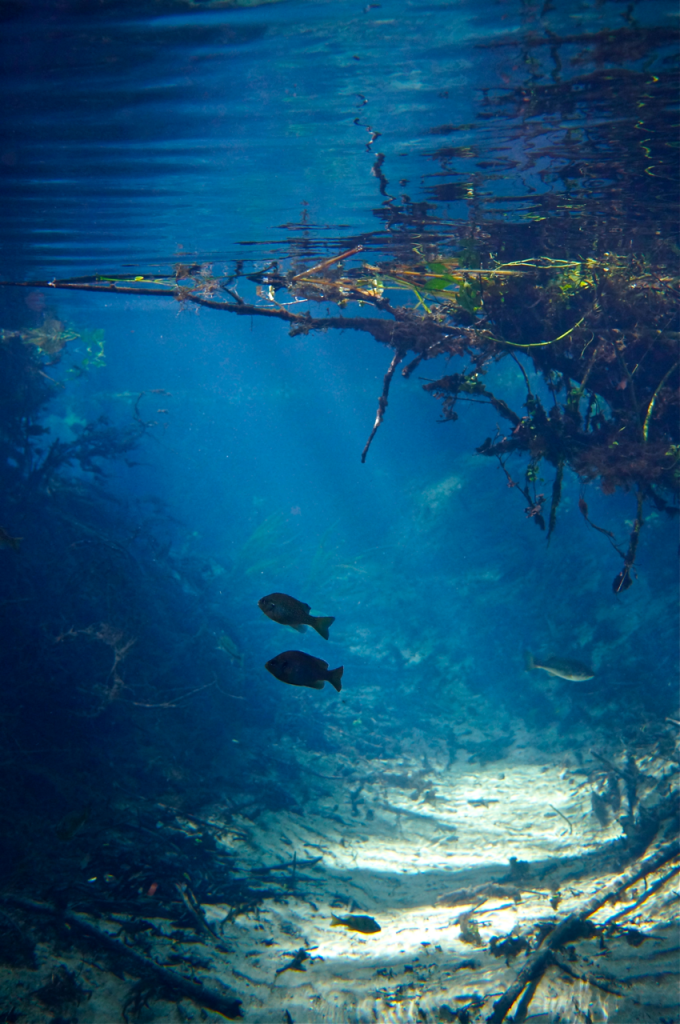
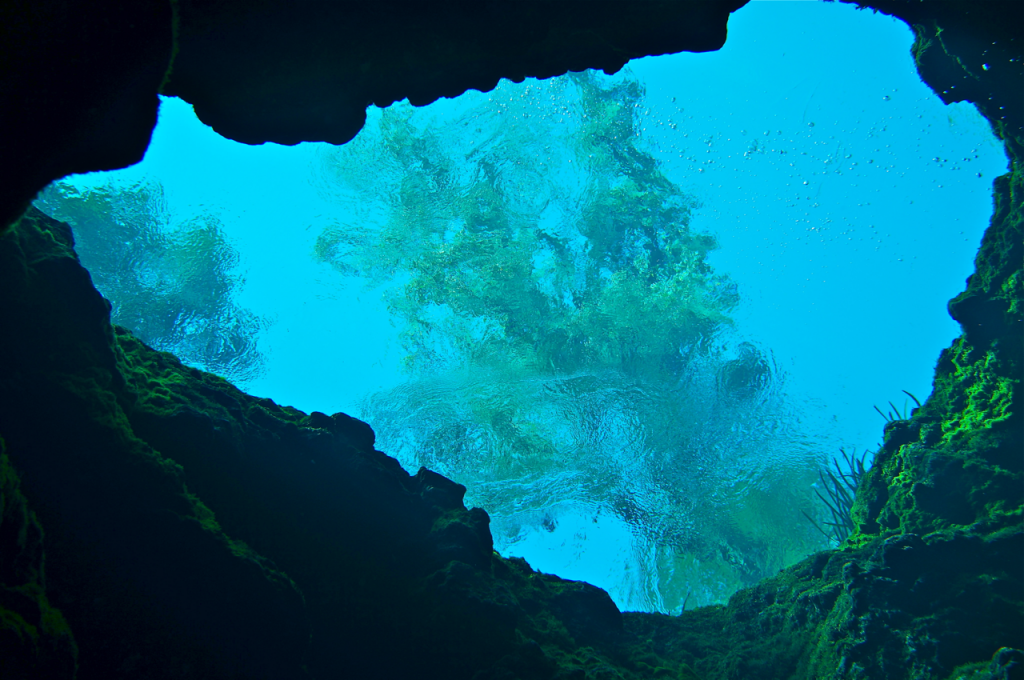
Blue Hole Dives from Geo Ideas on Vimeo.
Here’s one more video, with fish and a turtle in the spring. Anyone who can identify the fish gets a prize.
Not all the wildlife I saw was aquatic though! This was one of the largest spiders I’ve ever seen in Florida. And, just for vanity’s sake, one of your author.
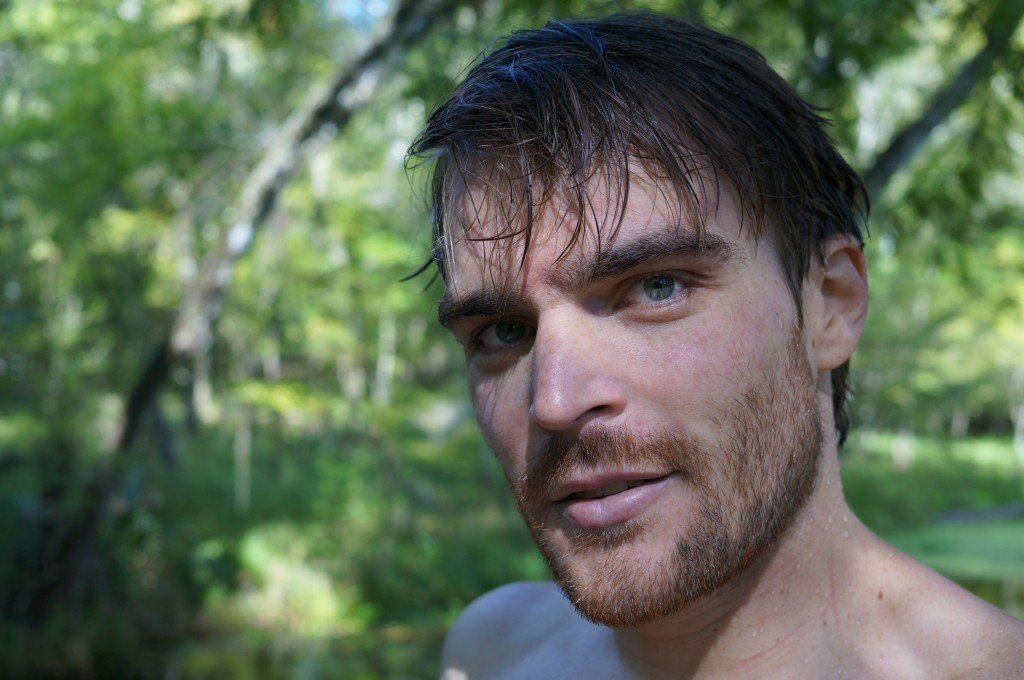
The Cedar Head spring run.
Looking up the mouth of the spring run from Blue Hole.
